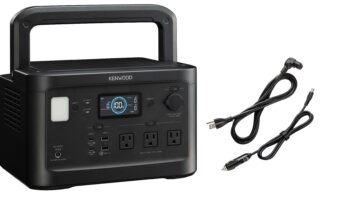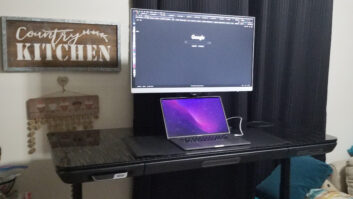Las Vegas – “Shift happens.” That was the summary of the digital television market for 2004 and 2005 by Toshiba America Consumer Products TV marketing VP Scott Ramirez, who predicted at International CES, here, that industry sales of rear-projection and CRT direct-view televisions would move more and more toward flat-panel models in key screen sizes this year.
Ramirez said that over 7 million DTV units were sold by the industry in 2004, and over 10 million units are expected to be sold in 2005. Over half of 2004 DTV sales were rear-projection models, he said. But flat-panel models showed signs of significant growth ahead.
“The 40- to 47-inch screen size segment in 2005 probably will start shifting to flat-panel as prices continue to come down,” he said, adding that flat-panel TV sales should see 75 percent to 100 percent growth in 2005, to 4.9 million units.
Within the flat-panel TV mix, LCD will represent the bulk of sales in the 37W-inch and under screen sizes, while plasma will dominate the 42W-inch and 50W-inch segments.
“Forty-two-inch is where the unit volume will be, but I’ve yet to pay my mortgage on unit volume,” Ramirez said. “The wide-screen sizes are becoming more and more important in terms of dollar volume. Today, 35 to 40 percent of all LCD units are widescreen, and 65 percent of the dollars are already widescreen. That is going to continue to grow.”
In plasma, EDTV models are going to see significant growth, due to aggressive price moves in 2005, he said.
The rear-projection TV category saw 6 percent growth in sales to 3.6 million units in 2004, but within that category was seen “a fast shift to microdisplay models, which grew from 1.3 to 1.4 million units to 2.5 million units [in 2004],” Ramirez said.
Ramirez forecast sales of 1.5 million digital big-screen direct-view CRT televisions in 2005, with 90 percent of the mix shifting to widescreen 16:9 models.
In 2004, digital direct-view TV sales were up 41 percent, and 16:9 models were up 107 percent, Ramirez said. The only digital direct-view category that was down from last year featured 4:3 aspect ratios, he added.
Other digital TV categories seeing growth were projection TV, which was up 49 percent; fully integrated DTV, which was up 230 percent; LCD TV, which was up 216 percent; and plasma TV, which was up 163 percent. Overall, digital TV sales were up over 81 percent, Ramirez said.
What was good for the industry was better for Toshiba, he added.
“At Toshiba, we support every category, so whatever grows, we grow,” Ramirez said. “Between January and November 2004 we were the No. 2 TV company in the United States, outgrowing the industry in almost every category.”
For 2005, Toshiba will continue to market direct-view CRT televisions, including a line of “super-thin” models that are one-third thinner than conventional models.
In LCD and plasma TV, Toshiba will take an aggressive position by introducing more models and bigger screen sizes in 2005, Ramirez said.
Similarly, in microdisplay rear-projection, Toshiba will bring more models and bigger screen sizes, including a second-generation DLP line called Talen X, which will include some of the company’s first 1080p DLP models.
In early 2006, the company will bring out the world’s first surface-conduction electron-emitter display (SED) flat-panel televisions, through its joint venture factory with Canon.
Ramirez called SED “the ultimate combination of the old and the new,” meaning the technology offers the picture quality benefits of CRT displays and the hang-on-the-wall form factor of plasma or LCD TVs.
SED will offer 1080p resolution with pixel-by-pixel addressing, an 8,600:1 contrast ratio, a 1 millisecond response time, and high-speed processing with one- to two-thirds less power consumption than other flat-panel technologies.
Toshiba will launch SED with 50W-inch screen sizes, Ramirez said, as “the Ferrari of flat-panel televisions,” meaning the company will at first derive a premium price point for the technology compared to plasma and LCD TVs. The following year, a high volume factory will go online, which Ramirez said will enable SED to go head-to-head in price with LCD and plasma models.













